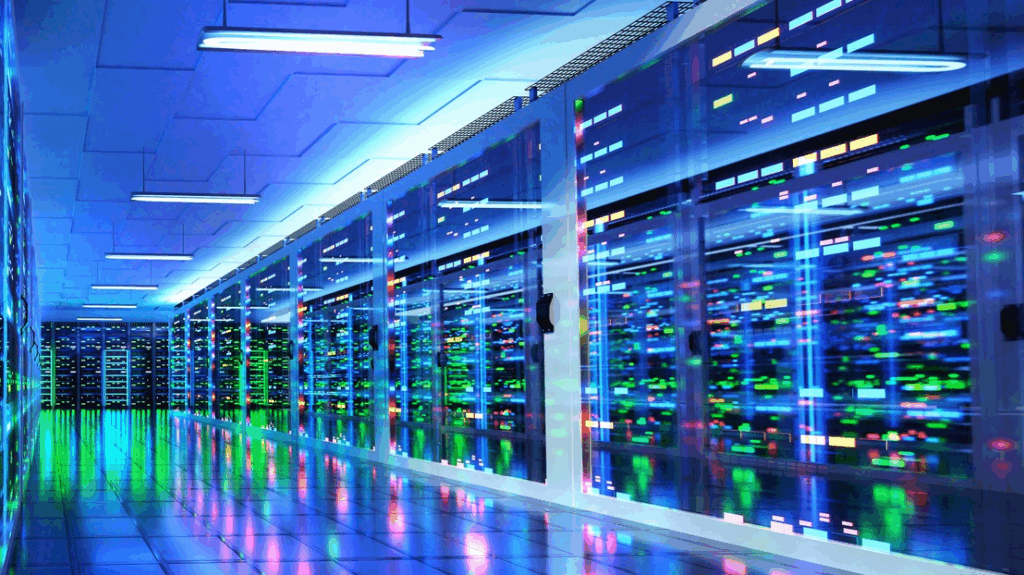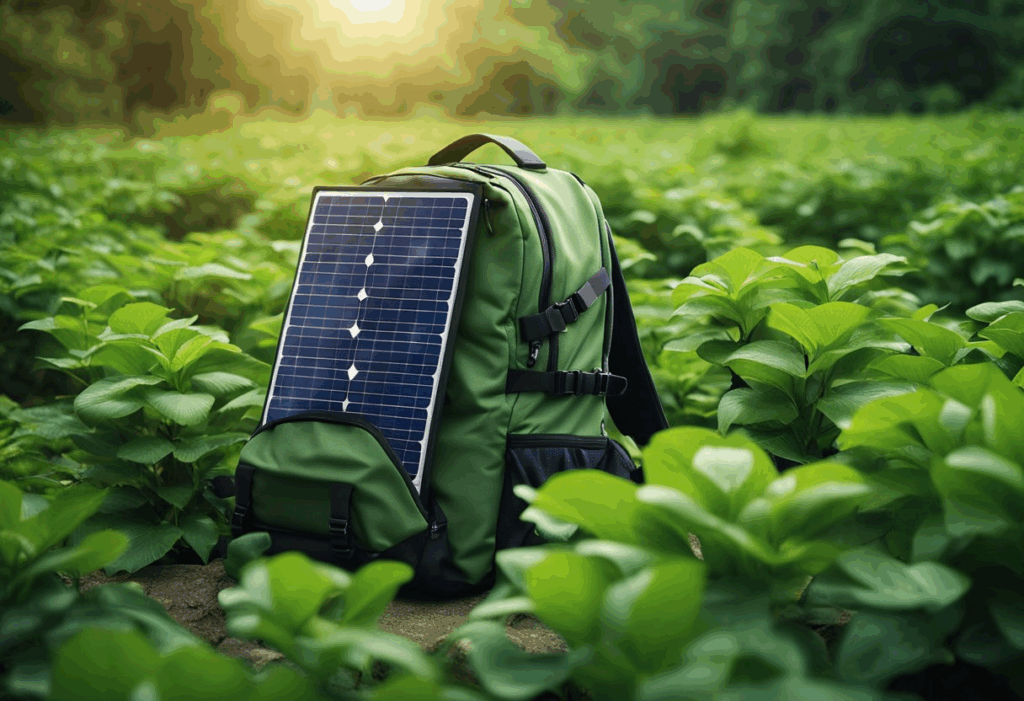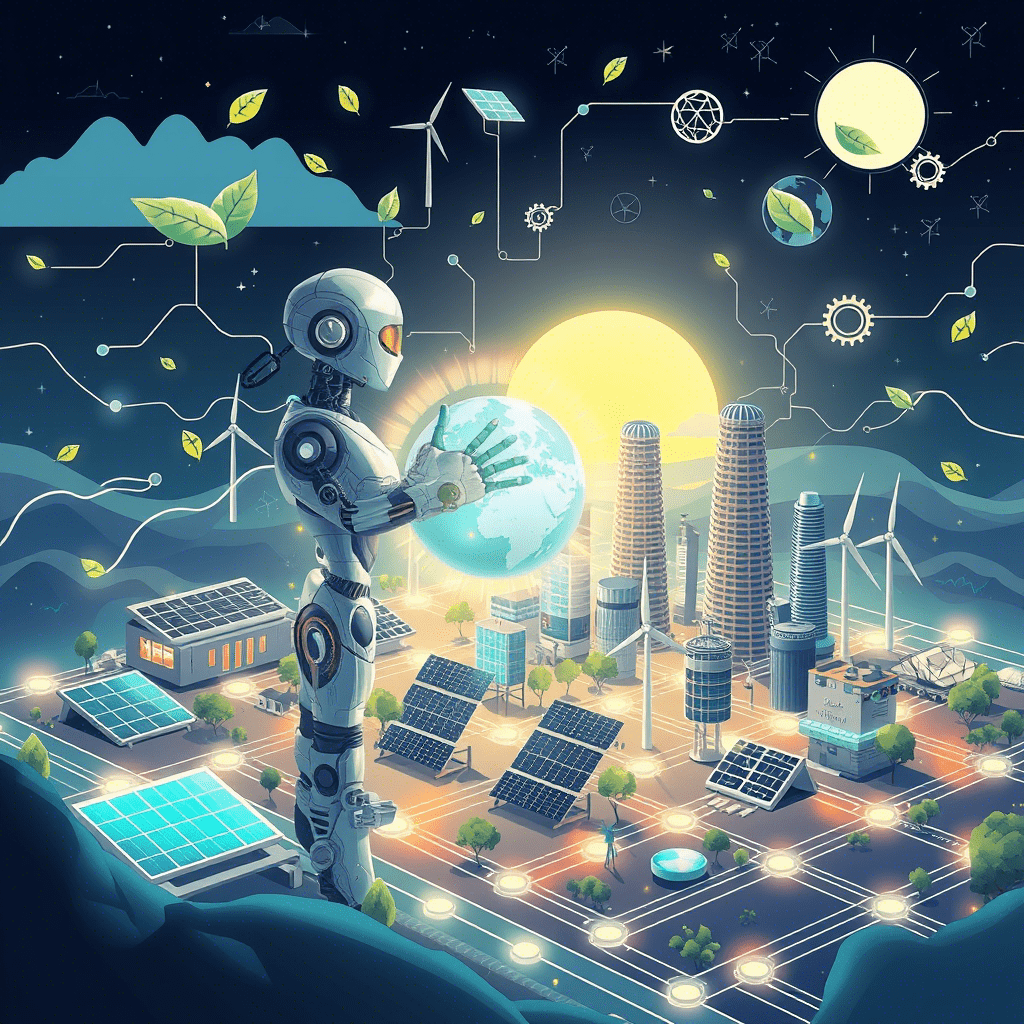Hey Eco-Friends! Andrea here 😊
You know how I love diving into the latest green innovations — whether it’s a sleek new solar panel design or the genius behind next-gen battery storage. We talk a lot about how to make our planet greener, and honestly, that’s what gets me up in the morning!
But lately, something super interesting has been showing up in the 2025 green energy headlines, and it might surprise you: AI.
At first glance, AI doesn’t exactly scream “eco-friendly.” After all, those massive data centers powering AI models use a ton of electricity — enough that global data center energy demand is expected to more than double by 2030. It definitely makes you stop and think: can something so power-hungry actually help us fight climate change?
Well, as it turns out… maybe yes — and in some pretty exciting ways.
Let me explain why this AI + green energy combo has me feeling hopeful about our planet’s future 🌍✨
🤖 AI: The Brain Behind Our Smarter, Greener Grids
Think of AI as the ultimate energy optimizer — like a super-smart assistant for our entire power system. And honestly, we need all the help we can get when it comes to managing renewable energy efficiently.
Here’s how AI is quietly revolutionizing the way we generate, store, and use clean energy:
🔍 Supercharged Predictions
AI can forecast energy needs with incredible accuracy. Need to know how much power your neighborhood will use at 3 PM tomorrow? AI crunches data like weather patterns, historical usage, and even local events to give utilities a heads-up. That means less wasted energy, lower bills, and smarter grid management.
🌬️ Managing the Unpredictable
Solar and wind are amazing — but they don’t always show up when we need them. AI acts like the conductor of an energy orchestra, balancing intermittent renewables with storage systems and traditional sources. This helps avoid blackouts and ensures that every drop of clean energy is put to good use.
⚡ Accelerating Clean Tech Breakthroughs
Remember how long it used to take scientists to discover new materials for batteries or solar panels? AI is changing that. By combining machine learning with physics, researchers are now developing breakthrough technologies up to 10 times faster. That means better solar cells, longer-lasting batteries, and more efficient turbines could be coming sooner than we think!
♻️ Helping Build a Circular Economy
Beyond just energy, AI is helping us rethink how we make and reuse products. From smart recycling systems to product designs that prioritize longevity, AI can analyze complex supply chains and point out where we’re wasting resources. It’s nudging us closer to a world where nothing goes to waste.
🔍 Leading by Example: DeepMind’s Energy Breakthroughs
This is where it gets really exciting! Companies at the forefront of AI, like Google DeepMind, aren’t just creating powerful models; they’re actively using AI to make their own operations incredibly efficient. DeepMind’s AI has been deployed to optimize the cooling systems in Google’s massive data centers—facilities that are essential for handling the world’s vast digital traffic but which also consume enormous amounts of energy. By applying machine learning algorithms to analyze a multitude of sensor data, DeepMind’s AI can predict temperature fluctuations, server workloads, and environmental conditions with incredible accuracy. This predictive capability allows the system to adjust cooling mechanisms in real time, delivering just the right amount of cooling exactly where and when it’s needed, rather than running systems at full capacity around the clock. The result is a staggering up to 40% reduction in energy used for cooling—translating to a significant overall efficiency gain for these energy-intensive facilities. This kind of direct, impactful energy saving, driven by AI itself, is a testament not only to the maturity of artificial intelligence as a transformative tool but also to its potential to contribute meaningfully to sustainability goals. Moreover, Google continues to push the envelope with innovations like custom-designed hardware such as Tensor Processing Units (TPUs), which are built specifically for AI workloads and are inherently more energy-efficient for these tasks than general-purpose GPUs. Together, these advancements demonstrate how AI can be both a driver of business value and a force for environmental responsibility, setting a precedent for industries worldwide.

⚠️ But There’s a Catch…
I won’t sugarcoat it: AI uses a lot of energy. And if that energy isn’t coming from renewable sources, it could end up being a problem instead of a solution.
The good news? In 2025, companies aren’t just building bigger data centers — they’re actively looking for places with clean, reliable energy to power them. Think wind-powered server farms in Scandinavia or solar-backed hubs in Australia. This growing demand for green data centers is actually pushing innovation in renewables forward.
So yeah, AI is kind of like a double-edged sword — it’s both a challenge and a catalyst for cleaner energy. But if we guide it wisely, it could become one of our strongest tools in the fight against climate change.

💡 Final Thoughts
While AI isn’t the magic bullet for saving the planet, it is becoming a powerful ally in our journey toward a greener future. When paired with sustainable practices and renewable energy, AI can help us optimize, innovate, and scale solutions faster than ever before.
What do you think? Are you excited (or nervous!) about AI’s role in the green energy revolution? Let’s chat in the comments below — I’d love to hear your thoughts or any cool AI-for-good stories you’ve come across!
Stay curious,
Andrea 🌱
Related Content
- Next-generation energy storage and self-dusting solar panels: The best green innovations of 2024
- Google and Elementl Power Forge Partnership for 1.8 GW of Advanced Nuclear Energy
- Beyond Clean Energy – How Solar Farms Are Transforming Deserts into Thriving Ecosystems
- Revolutionizing Renewable Energy with Perovskite-CIGS Tandem Solar Cells
- France’s Massive Natural Hydrogen Reserve: A Game Changer for Clean Energy and the Planet
- Biophotovoltaic Systems: The Next Evolution in Solar Energy
- Geneva’s Homes to Be Heated by Recycled Energy from Revolutionary Swiss Data Centre
- Space-Based Solar Power: A Revolutionary Leap in Energy Production
- Breakthrough in Energy: The First Production of “Pink Hydrogen”
- Revolutionizing Clean Energy: University of Liverpool’s Hybrid Nanoreactor
- Renewable Energy in the EU: Progress and Challenges Towards 2030 Targets
- Revolutionizing Energy Storage: The Rise of Nuclear Batteries
- Aeroleaf WindTree: Redefining Urban Wind Energy
- 7 New Solar Panel Technology Trends Shaping the Future
- Solar breakthrough means energy can be kept in batteries that don’t overheat | Euronews
